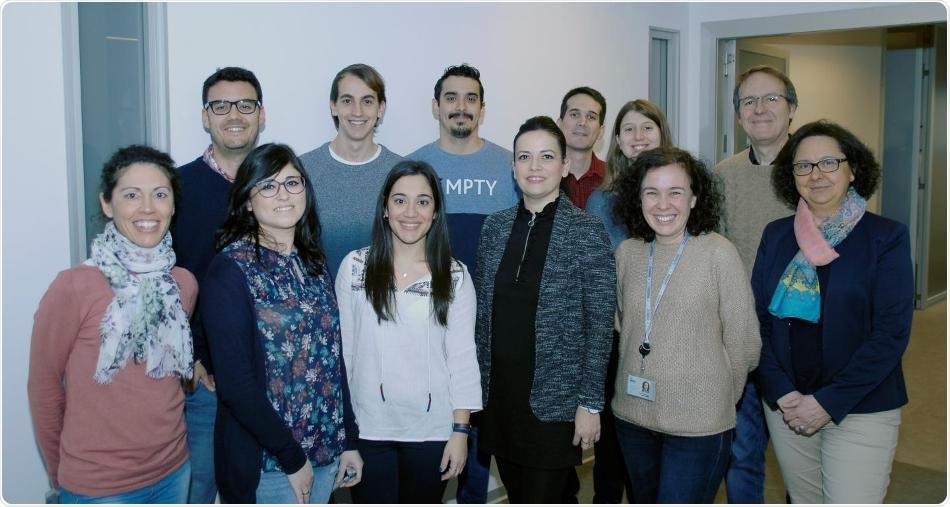All cells in an organism are known to have the same genetic data but not all carry out the same function. This is because all the cells do not contain the same active genes.

Image of the research group of the University of Córdoba led by Genetics Professor María Teresa Roldán Arjona. Image Credit: University of Córdoba.
DNA methylation is responsible for causing part of these variations in gene activity. DNA methylation is a silencing process that labels the genes to keep them “off” when they are not required.
These labels are vital epigenetic marks for the organism and are associated with diseases, including cancer, because when they are not controlled, they can end up silencing significant genes required for regular cell activity.
Now, the University of Córdoba researchers have established just that, a unique method to re-stimulate the silenced genes. The researchers have designed a tool that helps improve epigenome editing.
The epigenome is the term given for the group of epigenetic marks that serves as an on/off switch for genes and controls gene expression.
The Epigenetics and DNA Repair research group, headed by Genetics Professor María Teresa Roldán Arjona, performed the study that focused on the methylated DNA form called 5-methylcytosine, which is responsible for causing gene silencing.
Our aim was to design a system that eliminates this methylcytosine from specific places in the genome and susbstitutes it for unmethylated cytosine, so as to once again turn on those silenced genes.”
Rafael Rodríguez Ariza, Genetics Professor and Research Team Member, University of Córdoba
CRISPR is a genetic editing technique that employs RNA guides to direct the Cas9 protein to particular places on the DNA and inhibit it. This technique was specifically used in this study.
In this case, an inactive version of the Cas9 protein was used, given that our aim was not to eliminate a DNA sequence, but rather to remove some of the labels responsible for gene silencing.”
Rafael Rodríguez Ariza, Genetics Professor and Research Team Member, University of Córdoba
To achieve this, the research project employed a plant enzyme known as ROS1 that removes these molecular labels. ROS1 is a protein that is found only in plants and directly releases the DNA from those marks, something that distinguishes it from animal proteins that only function indirectly in a more complicated manner.
The approach involves inserting the ROS1 protein into the in vitro cells, along with the inactive Cas9 protein and RNA, to guide it to the gene that has to be re-stimulated.
The innovative tool together with the formerly existing ones is another step forward in epigenetic editing and interpreting DNA methylation—the action that changes into silencing genes and is associated with key pathological processes.
Source:
Journal reference:
Devesa-Guerra, I., et al. (2020) DNA Methylation Editing by CRISPR-guided Excision of 5-Methylcytosine. Journal of Molecular Biology. doi.org/10.1016/j.jmb.2020.02.007.